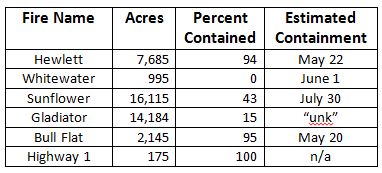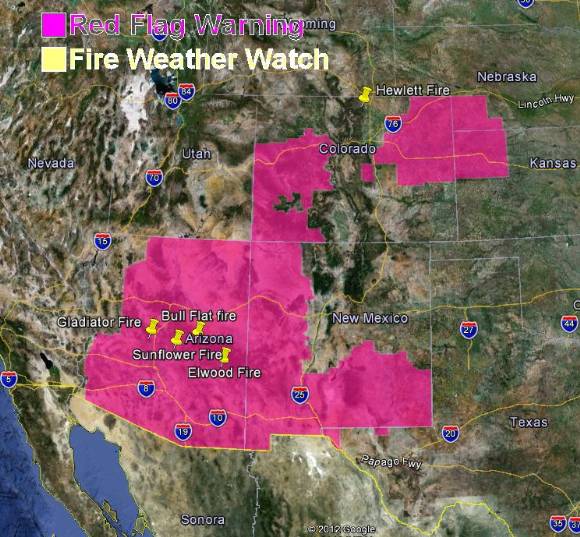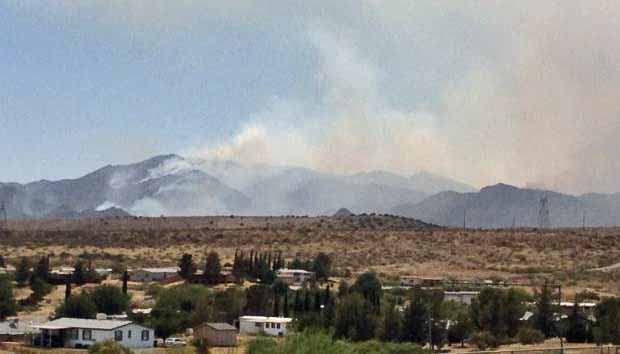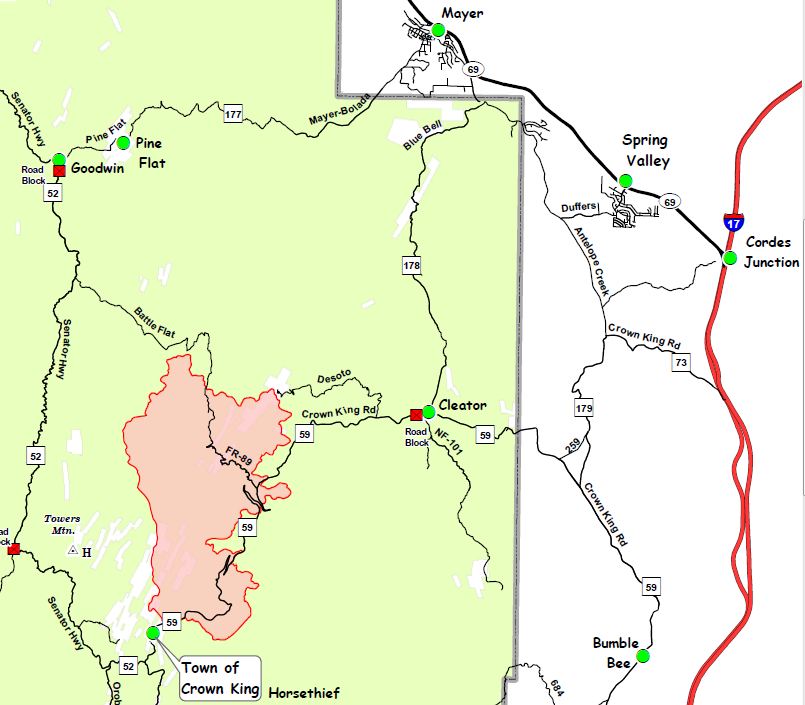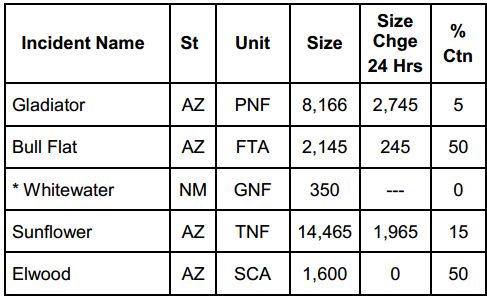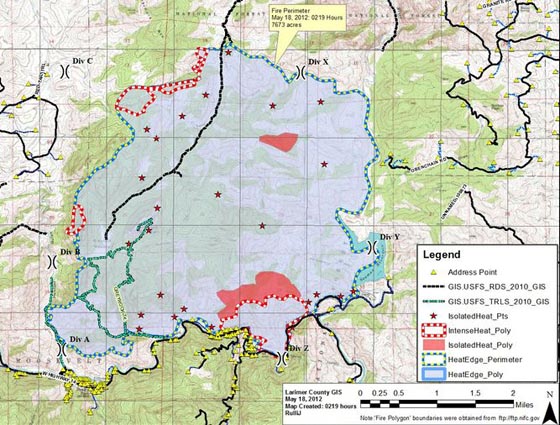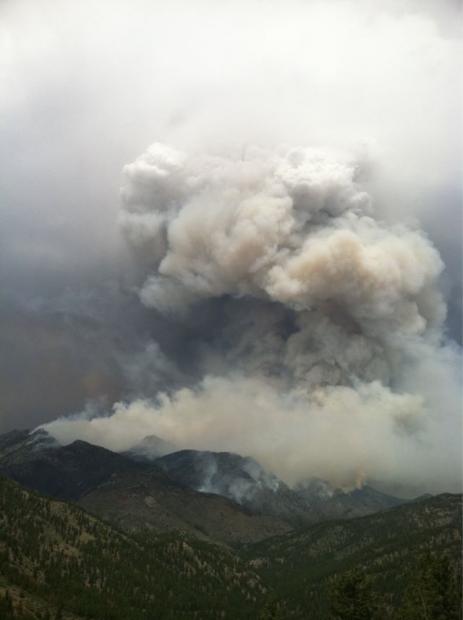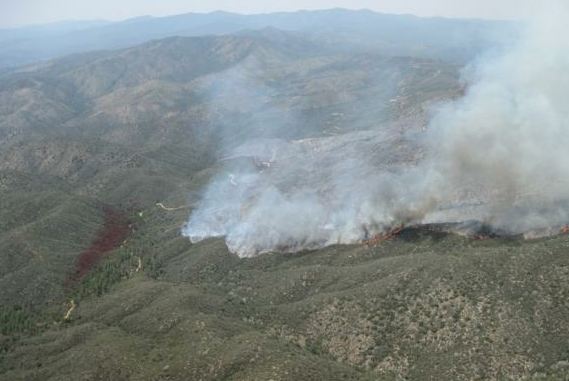
Highway 1 fire in Ely, Minnesota was a big friggin’ deal
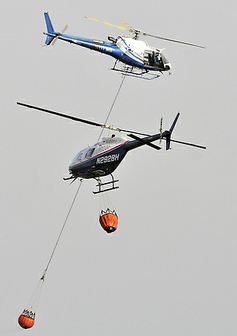
Thursday’s Highway 1 fire that burned into the outskirts of Ely, Minnesota was not huge in terms of size, burning 175 acres, but it burned three structures, caused evacuations, and was featured on a BBC program. The National Geographic 24/7 Wild channel was in Ely broadcasting a live program about black bears, when right at the end of the episode the fire broke out. They mentioned it on the air, and when the program ended the crews went to the fire a few miles away and shot some interesting footage which they aired Monday night on 24/7. They tied it in with bears by explaining that when threatened, bears will frequently take refuge in a tree, but the host said that may not be the best tactic when a wildfire is approaching.
An article in the Pioneer Press gave a lot of credit to the local firefighters who placed an engine at nearly every threatened house and did the best they could in the face of the rapidly moving fire pushed by 35 mph winds. The article also credited the aerial resources for helping out significantly with a rapid initial attack response, something that is increasingly rare, at least in the western United States (with the possible exception of CAL FIRE’s S-2 fleet on state-protected lands). Here is an excerpt from the article:
…From the [Superior National Forest] district office, [Kawishiwi District Ranger Mark] Van Every could see three helicopters, including a giant Sikorski Skycrane, dropping water on the fire in an effort to slow its march north into town and keep it away from buildings. The helicopters, on the scene minutes after the fire was reported, had been on call at the Ely airport as part of the regional and national network of forest fire resources.
Just minutes later, the helicopters were joined by the two U.S. Interior Department CL-215 water bombers stationed in Bemidji. Just behind them were two more state of Minnesota CL-215s stationed in Hibbing. Each of the hulking twin-engine amphibians can drop 1,400 gallons of water in seconds, turn around, scoop up water from nearby Shagawa Lake and be back with another load within minutes.
“We had helicopters dropping water on the fire within 15 minutes of getting the call,” Van Every said. “The CL-215s were here within a half-hour or so. … If we hadn’t had those aircraft so close by and ready to fly, I don’t think we could have kept the fire out of Ely.”
Firefighters were very thankful on Saturday when the fire received an inch of rain.
Fire Weather Watch for South Dakota and Wyoming
The National Weather Service is calling it a Fire Weather Watch instead of a Red Flag Warning, but the lower elevations of northeastern Wyoming and southwestern South Dakota will have some significant fire weather on Tuesday. Forecasters predict winds of 15 to 25 mph with gusts up to 40 mph, and a relative humidity as low as 12 percent. Just to make things interesting, there is a chance of lightning with very little rain.
UPDATE 8:19 a.m. MT, May 22, 2012: This has been upgraded to a Red Flag Warning. See the map below. And again, this map shows nothing in Utah even though there is a Red Flag Warning for southern Utah for May 22.. The National Weather Service needs to fix this.
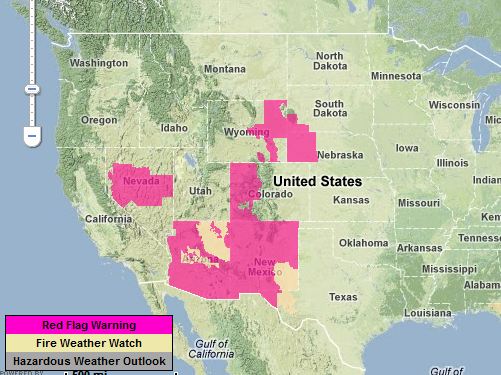
Thoughts about containment
We have written before about how some Incident Commanders have been misusing the term “containment”, confusing it with “control”. According to the National Wildfire Coordinating Group’s Glossary, when there is a control line around the fire which can reasonably be expected to stop the fire’s spread, it is contained. When I used to work as a Situation Unit Leader, after mapping the fire perimeter, the length of completed fireline, and the open line, I would use math to compute the percentage of fireline that was complete. That became the percent contained. Easy. It was not subjective, complicated, or controversial. It was honest.
In March, for example, there was a fire that was completely lined, but the Incident Commander called it 15% contained. Some IC’s may be scared to call a fire contained, thinking that if additional acres are burned, they will look bad. Or they might be afraid of not receiving the resources they need if the containment figure is between 25 and 100 percent.
If the containment stats given out by incident management teams become meaningless, it will complicate the prioritizing of fires when resources become stretched thin. With budget reductions resulting in fewer firefighters, air tankers, and helicopters, that “stretched thin” threshold has gotten lower and lower in recent years.
Here are some containment stats found today, May 21, on InciWeb and the NICC National Situation Report. I have no idea if they are accurate. They may be, but the point is, the way the term is being used, we just don’t know anymore.


